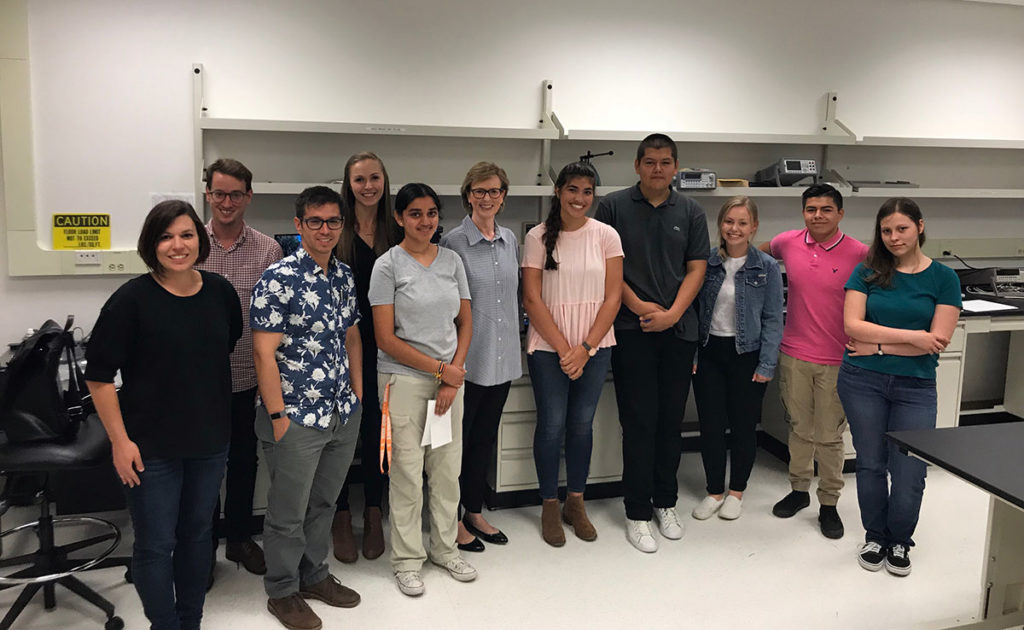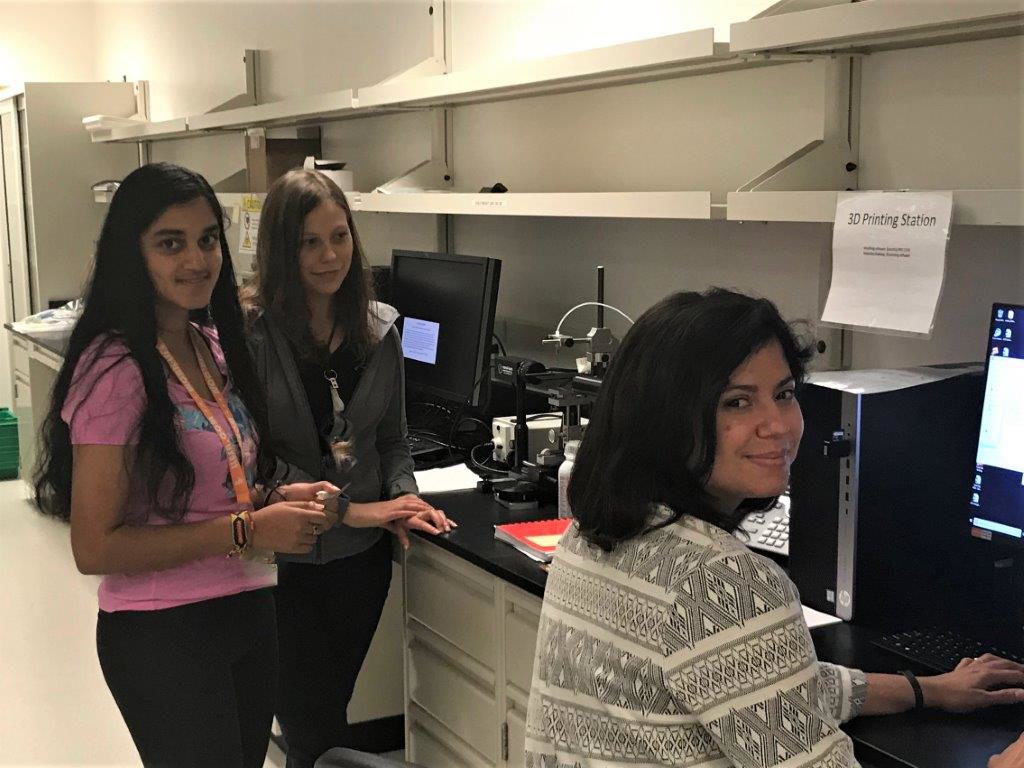This summer, the inaugural Livermore Lab Foundation (LLF)-supported High School Internship Program commenced at Lawrence Livermore National Lab (LLNL). A total of six high school students were selected from Livermore’s three public high schools – two each from Del Valle, Livermore, and Granada high schools – to participate in the month-long program. The interns did project work on two-student teams, each paired with mentors [Lab scientists and engineers] at LLNL in their respective fields of additive manufacturing (3D printing), bioengineering, and micro and nanotechnology.


The Micro & Nanotechnology Team worked on “Characterization and Identification of Materials for Microelectronics” – they experimented on ten unknown samples with different material properties and then did microfabrication, using processes like photolithography and metallization to design and produce mini discs printed with their own images/designs. The Additive Manufacturing Team project worked on “Testing 3D Printed Mechanical Logic Gates” – using a 3D printer, they made logic gates (basic building blocks of mechanical computers) that could do computations in high-stress environments like Venus’ surface or the deep ocean. And the Bioengineering Team worked on “Surgical Tools for Implantation of LLNL Flexible Neural Probes,” – creating and 3D-printing a neural probe for use in a surgery to diagnose and understand tinnitus.

In the end, students’ internship highlights included fresh perspectives (each student had a teammate from a different high school); lunches with the college interns and learning about their pathways to college; lunches with LLNL employees and discussing their career pathways; using new software; “putting on the bunny suits” and going in the Clean Room; learning about different STEM careers; and creating something that’ll really be used! As one mentor noted, “We’re doing real work here – we want to stress that!”

The pilot internship program concluded on August 9th with a poster celebration for an audience of parents, principals, the Livermore Valley Joint Unified School District (LVJUSD) Superintendent, LVJUSD School Board members, LLNL employees, LLF staff and board members. Students presented their posters as small groups rotated around the room; and they received feedback from LLNL employees. These students got a rare early hands-on intro to what it’s like to work at LLNL / a national lab. One intern said, “I’m more than pleased with my experience here!!” LLF President Dona Crawford surprised the students with college scholarships, remarking, “You are an inspiration to all of us.”
